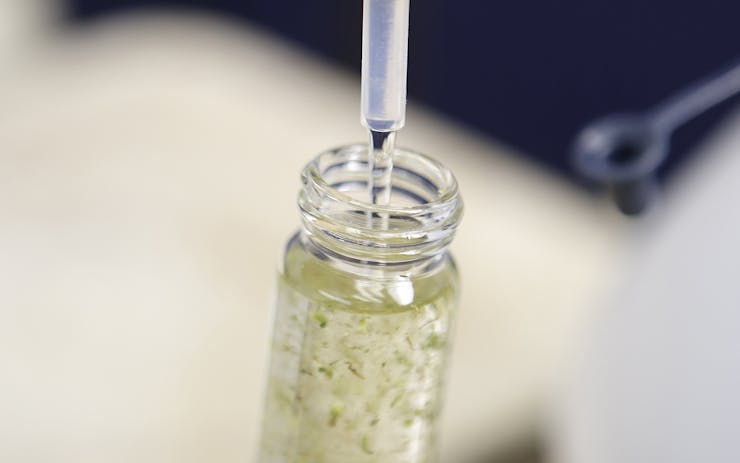If you buy legal medical cannabis in Los Angeles today, you’re lucky to find a reliable THC reading for most products on the menu. You’re even less likely to see information about levels of cannabinoids such as CBD, CBG, or CBN. Nor would you see much about terpenes, despite their increasing importance to patients and connoisseurs alike.
Remember, we’re talking legal, medical cannabis—adult-use stores won’t be licensed until 2018. Yet what’s in the cannabis is still largely a mystery. When the only guidance is the sniff of a jar and the recommendation of a budtender, is it any surprise so many people still think all pot is created equal?
Get ready for that to change. Testing requirements under California’s newly passed Prop. 64 will, in theory, bring an unprecedented level of transparency.
With more questions come more answers, and with more answers comes a better understanding of the plant.
As the law is written, all legal cannabis products must be sampled by an independent laboratory and tested for cannabinoids THC, THCA, CBD, CBDA, CBG, CBN, as well as the “terpenes described in the most current version of the cannabis inflorescence monograph published by the American Herbal Pharmacopoeia.” Which is available here if you want to check. (Here’s a preview.)
To most Americans, all those cannabinoids are just a lot of letters. Terpenes are still exotic unpronounceables in most circles. That’s precisely the point. Testing for cannabinoid and terpene levels may spark greater consumer interest in those compounds. With more questions come more answers, and with more answers comes a better understanding of the plant.
Maybe you don’t care about exotic cannabinoids and terpenes. Maybe you just want to get high. That’s cool, but you still care at least a bit about pesticides, don’t you? What about solvents, chemicals, and microbiological impurities? What about some trimmer’s pubes?
Prop. 64 requires testing for all those things. Seriously. Check out Sec. 26101.
California’s new adult-use law, if as thorough in practice as it sounds on paper, will give consumers more information about their cannabis than any state law in the country. It could help restore California to the cutting edge of cannabis culture by inspiring new topics of conversation and innovation.
And because of California’s outsized influence on the cannabis community—nearly 1 in 8 Americans calls the state home—those effects are likely to spread. Before long, rather than hazily delineating between indicas and sativas, even East Coast consumers could be singing the praises of CBN and linalool and wondering why Massachusetts and Maine don’t adopt the same testing standards.
Let’s not get ahead of ourselves, though. Even in California, such a system is far from a done deal. The success of Prop. 64’s ambitious, exhaustive testing scheme depends entirely on what happens next.
State cannabis programs are only as good as their implementation. Prop. 64 talks a big game, but it’s up to the state Department of Public Health to back it up. The department is tasked with determining very important details, such as setting health and safety standards, determining what to do if a product’s test results fall outside those standards, and how often testing needs to happen.
Perhaps most important, it’s also the department’s duty to ensure that testing actually happens—and yields reliable results. Which, judging from regulators’ track records in other adult-use states, is easier said than done. In some cases, loopholes have allowed the use of pesticides that become hazardous when exposed to heat (not a good thing for a product many smoke or vaporize). In others, lax oversight of testing procedures has created opportunities for growers and processors to game the system.
With Prop. 64’s passage, it’s now up to regulators and advocates to make sure the system functions properly. Having a consumer protection law on the books isn’t so reassuring when products on store shelves are found to contain dangerous pesticides, or when a $10 edible can still turn out to be a dud.
Prop. 64’s advocates spoke of their measure as the most sophisticated state cannabis law ever written. But the law’s just a blueprint. The construction is just getting started. Whether you’re a member of the industry or a concerned citizen, get involved! You can contact the Department of Public Health with questions or concerns about testing at omcs@cdph.ca.gov or 916-558-1784.
If the new law enriches a select few but doesn’t improve the quality, safety, and transparency of California cannabis—all at a price that can compete with the state’s vast black market—it will be a failure. On the other hand, if it works, the new testing system will shape the nature of the largest cash crop the world’s eighth-largest economy. Those new testing rules—and the knowledge they impart to consumers—could change the cannabis landscape around the world.





